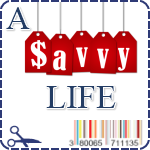The Rewards of Rebates (Part 2)
Grocer, retailer and manufacturer rebates are programs used to entice customers to buy merchandise at deep discounts. However, according to Consumeraffairs.com 40 percent to 60 percent of all rebates go unredeemed. Often, consumer purchases hinge on the idea of buying a product and in return getting some or all of their out-of-pocket expense back in hand. Yet millions of dollars in rebates are never even redeemed. So how do you make rebates work for you and get the most money from your purchase?
In order to truly save money playing the rebate game you'll need to understand the various types of rebates available.
Mail-In Rebates: These rebates account for the majority of rebates available in today's market. Redemption requires saving original receipts, cutting out product UPCs and filling out the fine print of rebate forms. Often times these rebate forms are available in-store, printed in coupon insert booklets or even available for download from your computer. Most forms of rebates, including mail-in offers, are a limit of one per household/address.
TMF, Cash Back Offers: Try Me FREE rebates are usually found as hangtag or peelie coupon offers attached to products in the store. While using coupons up front may lower the initial purchase price of these products, rebates typically deduct these savings from your rebate check. A form of mail-in rebates, TMF offers consumers the actual product purchase price, not including tax. This type of offer usually has the longest expiration date for mail-in completion.
 Beer Rebates: A popular form of tearpad rebates found in-store are aptly named Beer Rebates. These rebates are literally found in the beer aisle of your local grocer or retailer. Offered by beer companies, these rebates can provide significant savings on a variety of foods and products available at most stores, and often regardless of brand. Several states, including Utah, limit beer companies by not requiring the purchase of alcohol for rebate redemption. Simply fill out the form, attach your receipt and lick the stamp! These rebates are a limit of one per household and do not typically require UPC barcodes be attached. If you're having trouble finding these forms, ask your butcher or even customer service for beer rebates that are currently available.
Beer Rebates: A popular form of tearpad rebates found in-store are aptly named Beer Rebates. These rebates are literally found in the beer aisle of your local grocer or retailer. Offered by beer companies, these rebates can provide significant savings on a variety of foods and products available at most stores, and often regardless of brand. Several states, including Utah, limit beer companies by not requiring the purchase of alcohol for rebate redemption. Simply fill out the form, attach your receipt and lick the stamp! These rebates are a limit of one per household and do not typically require UPC barcodes be attached. If you're having trouble finding these forms, ask your butcher or even customer service for beer rebates that are currently available. Online Rebates: Many retailers and manufacturers offer online rebate programs. Redemption policies vary, but often require logging in to manufacturer Web sites to enter a variety of receipt data to verify purchase. These are the simplest form of rebate as no UPC or forms are required - enter the requested information and get your money back relatively quickly. Another benefit of this type of program is that coupons can often be used in combination with these savings to reduce out-of-pocket expense with consumers benefiting from the extra windfall in savings. Predetermined rebate dollar amounts do not take coupons into account thus giving customers the full rebate offer regardless of additional savings.
If you're enticed by these money-saving rebates, be prepared to jump through a few hoops. The savings are significant but the redemption requirements can be as well. So, before you buy into these programs, you'll need to make sure it's worth the time and even the relatively small amount of money out of pocket for tax and postage.
- Savvy How To: Rebate Savings (Part 1)
- Savvy How To: Rebate Savings (Part 3)





















